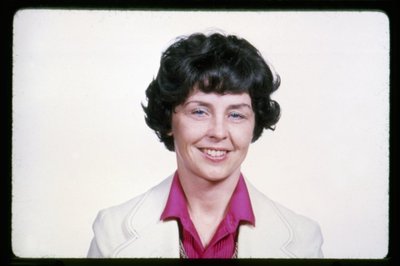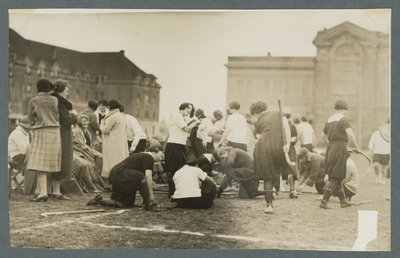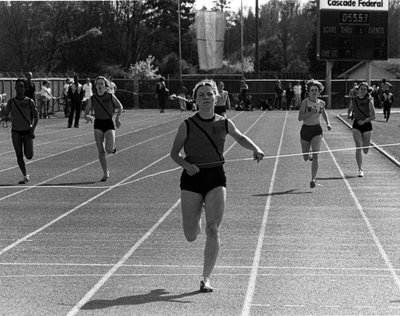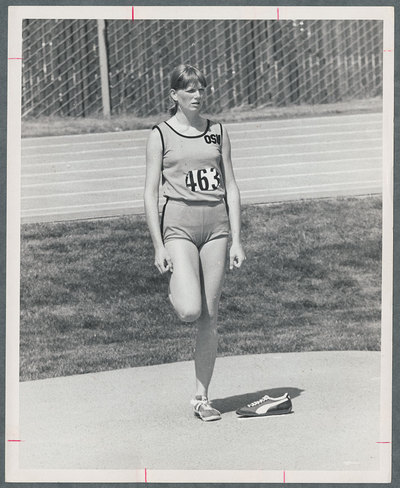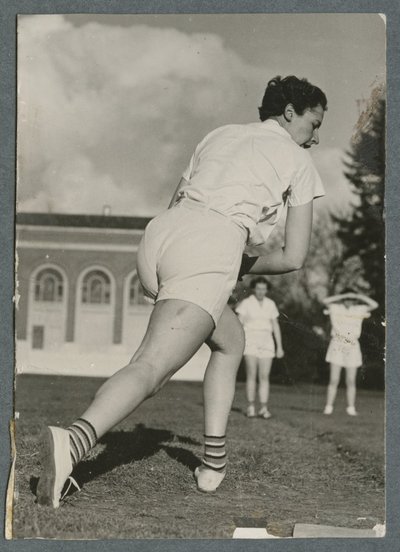We merged programs [and] I became the deputy athletic director, which was supposed to be the number two person. In reality, nothing changed. Dee did all of the men's athletic programs, I did all of the women's athletic programs. In 1985 when Dee retired, I was named the acting athletic director … it wasn't always well-received.
After we hired a new athletic director, he said, " we have really similar skills, I think you should think about doing something else," and I said, "I don't want to think about doing anything else." After three months of sitting at my desk with nothing to do, I did go to the president and say, "I am no good at sitting, I need something else that I can do." I went to work in the president's office … then down to the Stewart center to do conferences, special events, and turn it into a fiscally sound venture.
~ Sylvia Moore
I had to argue that field hockey was a sport … I go "it was a sport, here's the schedule [and] all the people that played in it." [When] field hockey was put back up as a sport, I was told [by Pat Ingram] when women's athletics came from the Women's Building over to here they dropped field hockey and they burned everything. They burned the kilts, they burned the sticks … I don't know if that happened; that's what I was told.
Women [struggled] I'd say in the sixties, seventies, up ‘til the eighties, and then it all changed.
~ Marianne Vydra
Thinking back to the twenties when girls were banned from much participation thanks to the American Medical Association and Herbert Hoover's wife … [their] research said that you would destroy your ability to bear children if you got into hardcore physical activity. Now, anybody who's kept a house knows there's some pretty hardcore physical activity involved. But women couldn't run more than 400 meters … because a woman had fainted at the end of a mile run. A lot of guys passed out too, but nobody seemed to think that was going to be a problem.
~ Sylvia Moore
We have Pat Ingram's picture (first women's athletic director) hanging next to Paul Valenti's outside my office … She held the first AIAW national track meet OSU had for women … [She and her friends were] pulling hurdles off the track … they'd take breaks up in the Women's Building … they would go smoke cigarettes [and] I'm like "you guys used to smoke up there?" She goes "oh yeah." So, different times.
Pat flat out told me they weren't allowed to run with the men. They had to run around them and have schedules. The only one that was allowed to practice with the men was Joni Huntley, that was it.
~ Marianne Vydra
[OSU women] had to bring their own balls [and] they wore pinnies, not uniforms, with numbers on them. When I started coaching, women bought all their equipment: shoes, softball gloves, leotards, you name it. They sold See's suckers to raise money to go to tournaments, they washed cars, they collected coupons. They were part of Recreational Sports funding for a few years, and it wasn't enough [for them to] travel.
[Things were happening] in the late fifties/early sixties, but the big catalyst was in 1972 when Congresswoman Edith Green and Senator Birch Bayh … offered a bill … called Title IX. It basically said in no aspect of education shall there be any discrimination between funding for programs involving men and women … and federal funding could be withdrawn if an incident was proved.
Well, that was a big stick, but it said education … but athletics are part of education. So, when they discovered [athletics] was included, there was an outcry … [It] was delayed for three years before it was finally published in the Federal Register.
~ Sylvia Moore

